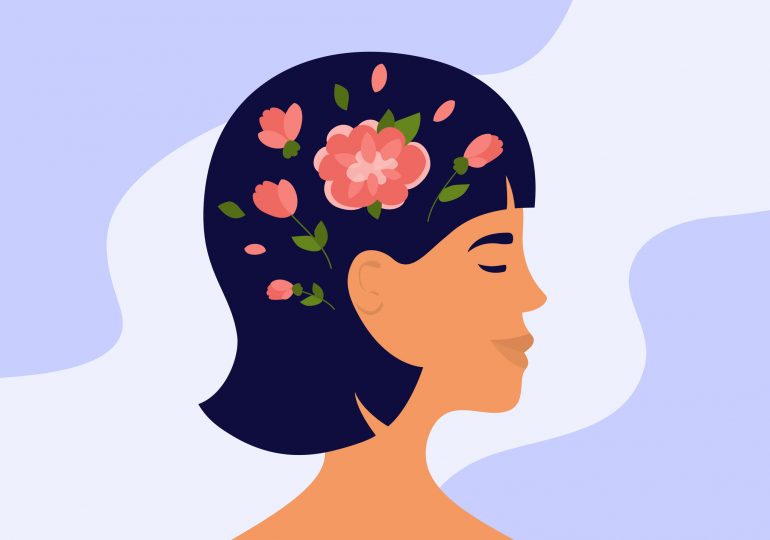If your goal is to be happier in the year ahead, you might focus on your body rather than your mind. You can start right now by sitting up a little straighter. Then give a brief smile—even a fake one. These tweaks will tell your brain that something good is about to happen and you’re more likely to feel positive and upbeat.
Sound unlikely? In research led by cognitive scientist John Bargh at Yale in 2009, people who held a cup of warm cup coffee before an interview were more likely to find an individual warm and kind. A 2010 study led by psychologist Joshua Ackerman, showed that people make different decisions when they’re seated in a hard chair versus a soft one. Soft seat, soft heart, you might say. When asked to negotiate to buy a new car, those in the hard chairs offered dramatically less than the others after one offer was rejected. Hard chairs made people harder negotiators.
[time-brightcove not-tgx=”true”]
We think of our brains as mystical and all-controlling, but they are also a 3-pound mass, sitting in a dark skull, completely reliant on the information that comes from our bodies and senses to make any decisions. Research into embodied cognition shows that what we touch, see, or otherwise experience with our senses affects our mindset and attitude. If you’ve ever shaken hands with a new acquaintance only to encounter a sweaty palm, you understand. Similarly, you can meet your perfect algorithmic match on a dating website, but if the person smells wrong on a first date, it’s all over.
Happiness isn’t exclusively a conscious decision. Very often our bodies send signals about how we feel and our conscious brains are simply responding rather than controlling. Feeling happier may start with going outside since research shows that being around water—including lakes, streams and ponds—improves well-being more dramatically than almost anything else. Mathew White, an environmental psychologist, has found that being near water versus being on a city street is about the same difference in happiness as doing household chores versus going out socializing with friends.
If you can’t get outside, consider bringing nature to you and buying flowers for yourself. We may be wired to respond positively to flowers from the days our ancestors roamed for food and knew flowers promised berries and fruits to come.
When everything is familiar, our brains go into a kind of holding pattern. But trying new experiences doesn’t have to be as grand as going on an exotic vacation. You can drive in a new direction to the grocery store or taste a new fruit at the farmer’s market. Any new sensory input will inspire your brain to wake up—which brings its own kind of pleasure. In one 2013 study, researchers tracked volunteers’ movements over several months and looked at their positive or negative emotional states. They found that having variety in a daily routine and visiting places they’d never been simply made people feel happier.
Read More: How to Make Your Mind Happy, According to Neuroscience
A lot of information goes from body to brain, rather than vice versa, but it’s easy to misinterpret the signals or attribute them to the wrong cause. I once bought a new phone that I found to be sluggish and awkward. Unhappy, I went back to the store where a salesperson suggested that the problem might be the case I had purchased. “The way the phone feels in your hand seems to transform the experience,” he said. “I’m always surprised by how much difference it makes.”
My clear plastic case had a hard surface with squared edges, and the moment I switched to a soft silicone, the phone itself seemed transformed. Wow, that camera really was amazing! You would think that my brain would focus on the incredible technology in the very smart phone, but instead it got waylaid by the feel of the object. The soft case sent a comforting message to my brain that transformed what I thought not just of the case but of the actual function of the phone. The great cognitive linguist George Lakoff says that “our brains take their input from the rest of our bodies.” Even when we try to think abstractly, we rely on physical realities and our own body’s experiences.
However powerful your brain, you don’t want to outsmart your body. Neuroscientist David Eagleman points out that if you’ve ever watched a baseball game, you know that the body responds faster than the mind. When a pitcher throws a ball at 100 miles per hour, it takes about four-tenths of a second to get to the batter. Conscious awareness takes about half a second—which means that the ball crosses the plate before the batter quite literally “knows” it. If the body functioned only with conscious input, nobody would ever hit a baseball.
The body-mind links work in both directions and a body in motion stimulates the brain to be in motion too. In a 2014 study of creativity done by Marily Opezzo at Stanford, volunteers were asked to come up with different uses for a key. Answers had to be both original and practical. Opening a door wouldn’t count because it’s too obvious, but if you suggest using the key to clean the mud from your sneaker treads, you get full points.
When Oppezzo did the experiment, she had some of the people sit down for the test and others come up with their ideas as they walked on a treadmill. The group on the treadmill did almost twice as well as the others. That’s a stunning result. Movement opened up the free flow of ideas. Oppezzo titled her paper “Give Your Ideas Some Legs”—a version of Henry David Thoreau’s comment that “the moment my legs begin to move my thoughts begin to flow.” In the extraordinary way that metaphors spring to life in body-mind connections, activity that is flexible and fluid encourages those same qualities in your thinking processes.
Gratitude mind tricks like reframing a situation and looking for the positive give you some control. You realize that you don’t have to wait for events to make you happy—you can always look for the good. If you make your body a partner in the effort, you’re even more likely to improve your well-being. Hold that warm coffee, spend time by the water, or go for a walk in the sunshine. Your body will send the message that all is well—and your brain just might start believing it.
Leave a comment








